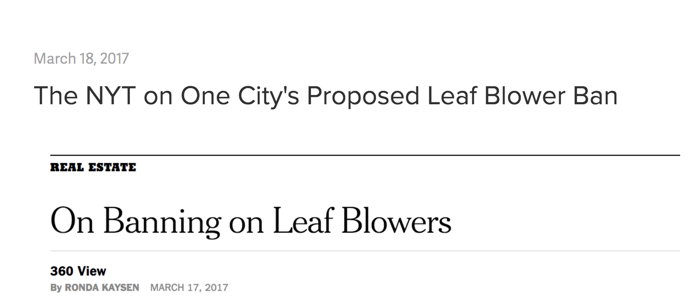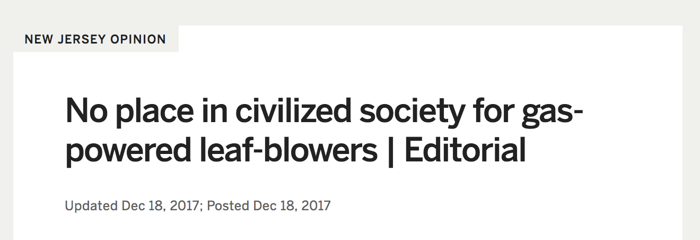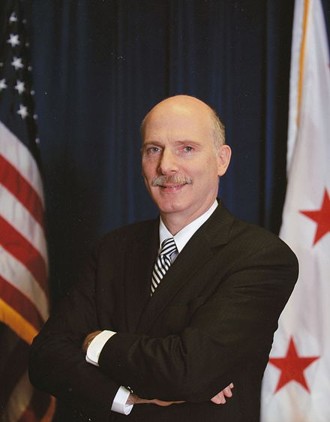In his testimony for the Washington D.C. City Council on June 2, 2018, Chris Pollock, of the Arup consulting firm, presented the results of Arup's original acoustics research, on the sound properties of different kinds of outdoor equipment.
The most significant part of his statement concerned the surprising difference between the official loudness rating of leaf blowers--say, 75 decibels--and how the machines actually sound.
The difference turns on the contrasting acoustic properties of gas- and battery-powered machinery. Gas-powered blowers with two-stroke engines, the most familiar (and dirtiest) models, produce dramatically more sound energy in the low-frequency spectrum.
This might seem benign, since people associate high-frequency noise with a dental-drill-style annoying whine. But low-frequency waves are in fact more intrusive and nuisance-creating. They travel much farther than high-frequency waves; they penetrate walls and barriers; and they mean that the noise-footprint of a gas blower covers a vastly larger area that a battery-powered machine with the "same" loudness rating. This explains the common-sense observation that neighbors can tell from many blocks away when a crew with gas-powered blowers begins its work.
Here's the data-based, researcher's way to convey that point, as Pollock put it in his testimony:
From the data above, we observe that clearly the group of gas leaf blowers all exhibit a much higher level of sound energy in the low-frequency bands....Based on our experience measuring sound, I witnessed that the three gas-powered leaf blowers at an 800-foot distance were audible, two being clearly audible, the RedMax EBZ8500 and the Stihl BR700X. And the third, the ECHO PB-760, being noticeable. While the battery-powered blowers at that same distance were not distinguishable above the very quiet community sound levels at that distance....
Low-frequency noise requires heavy construction and materials to stop sound transmitting from the outside of the building to the inside...The sound levels of gas leaf blowers are measured inside the house are significantly above those of the battery-powered leaf blowers, even when both of the leaf blowers are rated at the same decibel level at 50 feet.
But a simpler way to grasp the difference may be to listen to the 18-second sound clip below, from the Arup experiments. It's of two blowers that officially have the "same" loudness rating, measured at the same distance.
The first eight seconds are a battery-powered machine, with a distinctive high whine -- but a sound that falls off very rapidly with distance. If this machine were running outside a building, you might not hear it inside.
The second sample is of a gas-powered machine.
See if you can notice the difference!

















